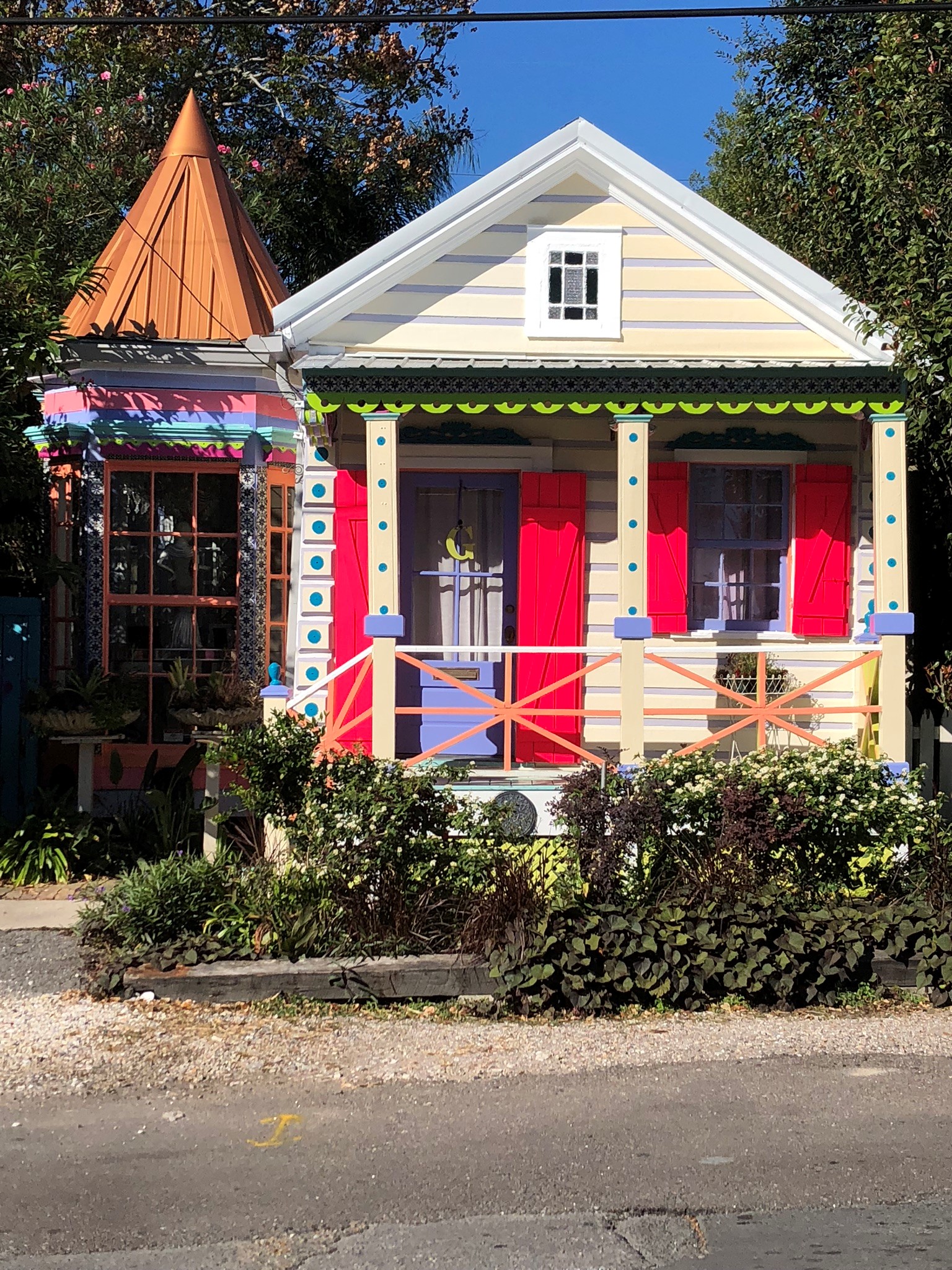Include a Topper!
-
Happy Birthday Banner
$9.00 -
Gingerbread Cake Topper
$15.00
Add Ons
Your cart is currently empty!
Since 1949 celebrating 75 years. Order online or call us at 1 800 GAMBINO (426-2466)

They line the streets like long narrow cracker boxes tipped on their sides, brightly colored, some with gingerbread trim others with well used front porches meant for gathering. The Southern charm of a shotgun home comes not only from its historical significance, but its transformation from affordable housing into a New Orleans staple. Traditionally a home that is rectangular in shape and whose rooms lead one into another without hallways, a shotgun is a home that affords very little privacy. Here in the Big Easy it’s mythologized that the name “shotgun” comes from the front door being a “straight shot” to the back door, but turn back the pages with us and find out where the name truly comes from.
The Makings of a Building

While there are many tales of where this distinctive style of architecture and it’s name originated, most historians locate the original lines and materials for the shotgun home in the western and central regions of Africa. It is from these regions that the house’s name evolved; there the word “shogun” is a name meaning “God’s house”. The people of these nations were forced to emigrate over the course of the 17th and 18th century and many ended up in what is now known as Haiti. Bringing their architectural culture with them, the people found their “shoguns” well suited for the warm climates of Haiti. The style of housing was not just an architectural taste, the straight line provided easy airflow from front to back at a time when air conditioning was non-existent. More than this, the house style offered a cultural point of communion: a front porch specifically for gathering and interacting outdoors with neighbors and the community at large.
The shape of the structure made the housing particularly affordable because not only was it a simple rectangle, but it required very few interior walls. It was a set up that made the most of interior space. The original style was created with stucco walls, gabled thatched roofs, and African motifs decorating the exterior.
Following the African Insurrection of 1792, Haiti experience da mass exodus of Hatitan plantation owners, their enslaved Africans, as well as free people of color. They fled right to the mouth of the Mississippi River and settled in New Orleans, again transporting their shotgun house style. It is this transition that brought new external decorations to the buildings; where African motifs once permeated, decorative gingerbread trims and bright paint colors took their place.
Many of the homes built in the 19th century and on were constructed from barge board. Barge board was collected form the flat-bottomed boats that brought people and freight materials down the Mississippi to New Orleans in the early 1800s.
Double Down
The turn of the 20th century saw an increase in wealth alongside a societal desire for a bit of privacy. It was at this time that some improvements were made to the humble style of the home. Roof lines began to show some variety, now offering hip, gable, or apron construction options. Victorian trims and cast-iron molding became all the rage. Shotguns, hereto created in only the single variety, began to double. The structure were sometimes expanded to create two dwellings that shared a wall. These “double shotguns” could house two families, or one who needed a bit more space. Camelback structures (second story add-ons) grew out of the rear of some shotguns, offering height and rooms with a view.
But the reverence and growth was not to last: the 1920’s and a wealthier population brought a decline in this style of dwelling. The “shotgun” became synonymous with poverty and therefore faded from the landscape. In their place grew townhomes and center hall cottages that provided both privacy and curb appeal for the wealthier middle class.
A Shotgun Kick-back
The wake of Katrina brought a renewed interest in these well worn characters. The simple, sturdy construction and the economical use of land made renovating old shotguns a new business. The popular double shotgun became an excellent investment for homeowners to add income and value by renting out the mirror image side to their own home.
New pre-fabricated shotgun homes modeled after the original style helped to get those displaced by the hurricane back to living in the lower 9th ward of Orleans Parish. Other lower Mississippi River towns also boast a high inventory of renovated shotguns, such as Louisville Kentucky, whose inventory rivals that of New Orleans.
Rethinking the interior layout to centrally locate the kitchen and family room, adding a side door and modern conveniences have transformed the shotgun into a family friendly and locally relevant home. And of course there is always the front porch to linger on while you get the latest neighborhood 411.